A History of the County of Somerset: Volume 1. Originally published by Victoria County History, London, 1906.
This free content was digitised by double rekeying. All rights reserved.
'Romano-British Somerset: Part 1, Roman Britain', in A History of the County of Somerset: Volume 1, ed. William Page (London, 1906), British History Online https://prod.british-history.ac.uk/vch/som/vol1/pp206-218 [accessed 23 February 2025].
'Romano-British Somerset: Part 1, Roman Britain', in A History of the County of Somerset: Volume 1. Edited by William Page (London, 1906), British History Online, accessed February 23, 2025, https://prod.british-history.ac.uk/vch/som/vol1/pp206-218.
"Romano-British Somerset: Part 1, Roman Britain". A History of the County of Somerset: Volume 1. Ed. William Page (London, 1906), British History Online. Web. 23 February 2025. https://prod.british-history.ac.uk/vch/som/vol1/pp206-218.
In this section
PREFATORY NOTE
For the following monograph I have searched the literature, printed and unprinted, as thoroughly as I could. I have also visited the chief sites—many of them familiar to me since my boyhood—and have examined the Museums at Bath, Bristol, Shepton, Taunton, and elsewhere. I owe sincere thanks to many helpers who are named in my pages, and above all to the Rev. H. H. Winwood, of Bath, without whose unfailing kindness and energy and knowledge I could not have achieved my task. For facilities and aid I am indebted at Bath to the Baths Committee and its Chairman, and to Mr. A. J. Taylor; at Bristol, to Mr. W. R. Barker; at Taunton, to Mr. Gray; and at Shepton, to the late Mr. John Phillis. It would be dishonest not to add that I have received other and no less valuable aid which I cannot here properly acknowledge. I desire also to express my gratitude to one now dead, who long ago encouraged a young student—the Rev. H. M. Scarth, Rector of Bathwick and of Wrington.
In citing published books I have used abbreviations which will, I think, be generally intelligible. But I may say that the two county histories by Collinson and Phelps, and the two histories of Bristol by Barrett and Seyer, are indicated simply by their authors' names.
I have also examined for this article much unpublished material, of which it may be convenient here to indicate the chief items: (1) The diaries and papers of the Rev. John Skinner, of Camerton, filling about 100 volumes in the British Museum, besides one in the Bath Institution ; these relate principally to Camerton, but also to other parts of Somerset (see especially pp. 289 foll.). (2) Some important collections relating to Bath, commenced long ago by a Mr. Gulstone, bought by the late Colonel Long in 1866, and now the property of Colonel Long of Woodlands, Congresbury. (3) A large mass of drawings and notes, which concern all periods of Bath history, collected by the late Mr. J. T. Irvine while resident in Bath forty years ago, and bequeathed by him to the Edinburgh Museum of National Antiquities; they contain valuable details about Roman remains, among much that is less valuable and much that relates to medieval and modern Bath. (4) Lastly, I have found in the British Museum, the Bodleian, and the library of the Society of Antiquaries of London many scattered notes, some describing discoveries made in Bath during the eighteenth century, some referring to other places or dates, which deserve attention. In particular, the plan of the Roman baths at Bath gains from a use of these new sources.
The result of this re-examination of the existing remains, and the literature published and unpublished, is a survey of Roman Somerset that is, at any rate, much fuller than anything previously attempted. Aided as it is by the numerous illustrations allowed by the publishers, I hope that it may further the scientific study of the really important Roman antiquities in the county.
F. Haverfield.
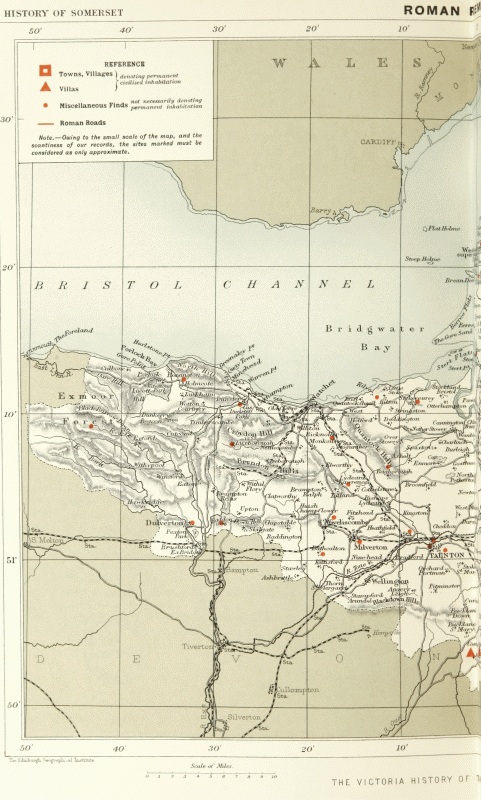
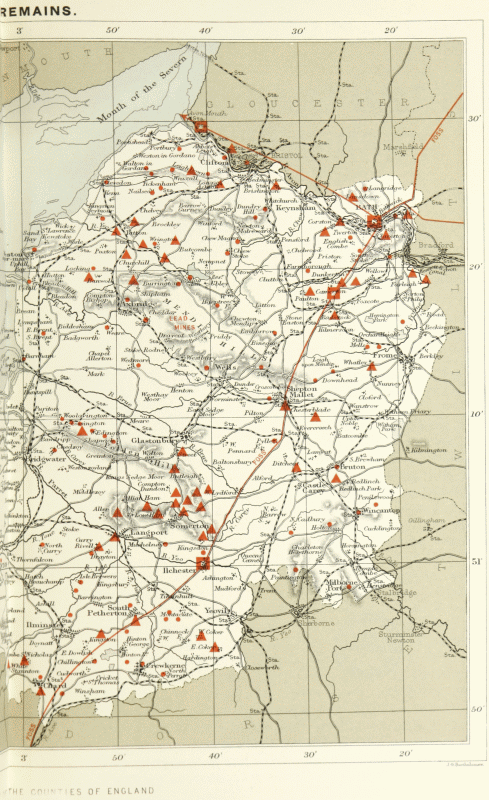
Roman Map
ROMANO-BRITISH SOMERSET
Part I. 1. Introductory sketch of Roman Britain. 2. Sketch of Roman Somerset.
Part II. Bath: 1. General sketch of Roman Bath. 2. Walls, gates, streets. 3. Internal buildings. 4. Temple of Sul and other remains found in 1790 and 1867. 5. Baths. 6. Private Houses. 7. Cemeteries. 8. Inscriptions. 9. Uninscribed objects in stone. 10. Coins. 11. Other small objects.
Part III. 1. Camerton. 2. Ilchester. 3. Ham Hill. 4. Villas. 5. Lead Mines on Mendip. 6. Roads. 7. Some miscellaneous finds, coin-moulds, etc.
Alphabetical Index and Bibliography.
PART I.
1. Sketch of Roman Britain
THE preceding chapter has shown that Somerset is unusually rich in striking Celtic antiquities. It is no less full of remarkable Roman remains. Though it lies far in the west country, and though much of it is marsh and much is moorland, it is certainly among the more noteworthy parts of southern Roman Britain.
Our account of this interesting region must needs be, like the preceding chapter, mainly archæological and not historical. It is true that when we pass from the Celtic to the Romano-British period, we begin to pass from the prehistoric to the historic. But we do not immediately reach the domain of full history. The allusions or narratives of ancient writers lend us their aid, but we cannot construct any continuous history of our subject, and we still depend chiefly on archæological evidence. In part this is due to the insufficiency of our knowledge, but to a still greater extent it is due to other causes. Even if we possessed a whole library of Roman literature about Roman Britain, we could not in this chapter attempt to write history. Two facts which are often overlooked limit us to a humbler though not an easier task.
The first of these facts is the character of the Roman Empire, of which Britain formed a province. Alike in its vast area and in its complex organization that Empire was constituted on a scale which dwarfs detail into insignificance. Its history—that is, its true history, apart from court scandals and imperial crimes—is the record of great developments slowly advancing among the peoples of three continents. It contains none of that continuity of individual life, that rapid succession of striking incidents, that quick growth of tendencies, which characterize the cities of ancient Greece or the little nations of modern Europe. Single men, local occurrences, are the least important items in its annals, and the fortunes of separate provinces are merged in the great movement of the whole mass. We may sketch the features of each or any province, its populousness, its degree of civilization, its mineral or agricultural or commercial wealth. We may string together in a rough narrative a few events connected with it. But we cannot write a real history of it, for it had no individual existence which the historian might trace.
A second fact imposes a still more serious limitation. When the Romans ruled our island it was not divided into its present counties or into any districts geographically identical with them. Neither the boundaries of the Celtic tribes nor those of the Roman administrative areas, so far as we know, agree with our existing county boundaries. When we study the Roman remains discovered in any one county, we deal with a division of land which for our purpose is accidental and arbitrary. The phrase 'Roman Somerset' is, strictly speaking, a contradiction in terms. We can discuss, as we shall presently do, the Roman remains found in our county, but we do so not because it is scientific, but because it is convenient. The topographical literature of our island is grouped so largely by counties that we can hardly treat the Roman antiquities on any other basis. But all the while we shall be dealing with an area which for our purpose has no meaning or unity. We can describe it; we cannot write its history.
These facts seem to justify a divergence from the plan followed by most county historians. Hitherto it has been customary to narrate the chief events recorded by ancient writers as occurring in Roman Britain, and to point out which of these events took place, or might be imagined to have taken place, within the county. The result is always to leave on the reader an impression that somehow or other the county possessed in Roman times a local individuality and a local history. In the following pages we shall adopt a different method. Utilizing the archæological evidence, which is now far better known and understood than a hundred years ago, we shall first sketch briefly the general character of Roman Britain and we shall then proceed to describe in detail the actual antiquities. We shall thus point out how far the district now called Somerset was an average bit of the Roman province.
The Roman occupation was commenced by the Emperor Claudius in a.d. 43. At first its progress was rapid. Kent and Essex were seized in a few weeks ; then the army of invasion seems to have advanced into three divisions, the Second Legion moving south-west towards Somerset and Devon, the Fourteenth and Twentieth Legions north-west towards Shrewsbury and Chester, the Ninth Legion north towards Lincoln. Within three or four years the Romans held all the south and midlands as far as Exeter, Shrewsbury and Lincoln ; part had been annexed, part left to 'protected' princes—for instance, the princes of the Iceni in what is now Norfolk and Suffolk. Then came a pause; some thirty years were spent by Ostorius Scapula and his successors in reducing the hill tribes of Wales and Yorkshire, and during these years the protected principalities were absorbed. About a.d. 80 the advance into Scotland began; about a.d. 124 the Emperor Hadrian built his wall from Tyne to Solway, and henceforward the Roman frontier was sometimes to the north, never to the south of this line.
The province thus acquired fell practically, though not officially, into two well-marked divisions, which coincide roughly with the lowlands conquered in the first years of the conquest and the hills which were conquered later (fig. 1). The former was the district of settled peaceful life, and in it we have to include the area now called Somerset. The troops appear to have been soon withdrawn from this district, and with a few definite exceptions there probably was not a fort or fortress throughout the south of our island after the end of the first century. It was the Roman practice, at least in the European provinces of the Empire, to mass the troops almost exclusively along the frontiers and to leave peaceful interior districts free from garrisons. Britain was no exception. The whole military force was stationed in Wales or in the north—that is, in the troublesome regions and on the Caledonian frontier. This military district was purely military ; it had its fortresses, roads and garrisons, but no towns or 'villas' or ordinary civilian life. The army which held it was perhaps forty thousand strong and ranked as one of the chief among the armies of the provinces. The most important element in Roman Britain was the military element.
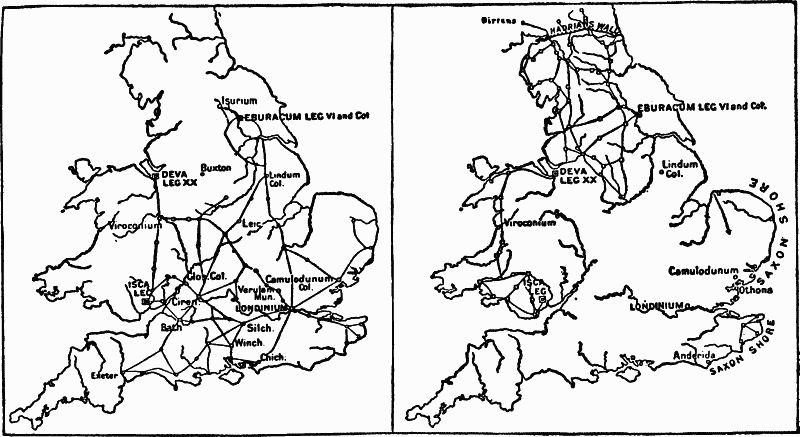
Fig. 1. The Civilian and Military Districts of Britain.
With this military element however we are not here concerned. For our present purpose it is enough to note its existence in order to explain the rarity of Roman military remains in Somerset. But we may pause to examine the features of the non-military district, within which the area of our county lies. These features are not sensational. Britain was a small province, remote from Rome, and by no means wealthy. It did not reach the higher developments of city life, of culture and of commerce which we meet abundantly in more favoured lands, in Gaul or Spain or Africa. Nevertheless it had a character of its own.
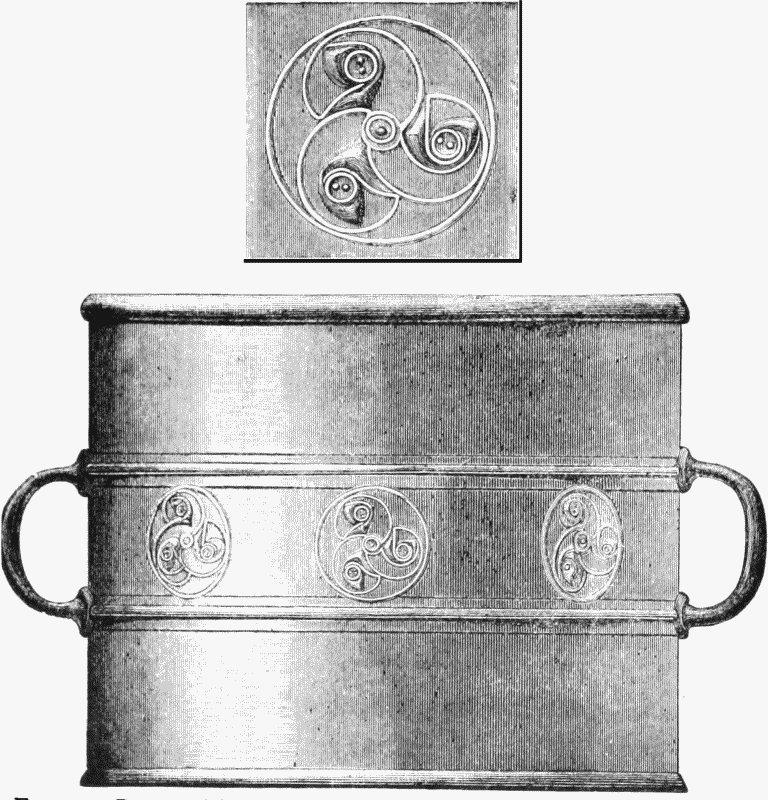
Fig. 2. Bronze Tankard from Elveden (Suffolk), Illustrating Late Celtic Art.
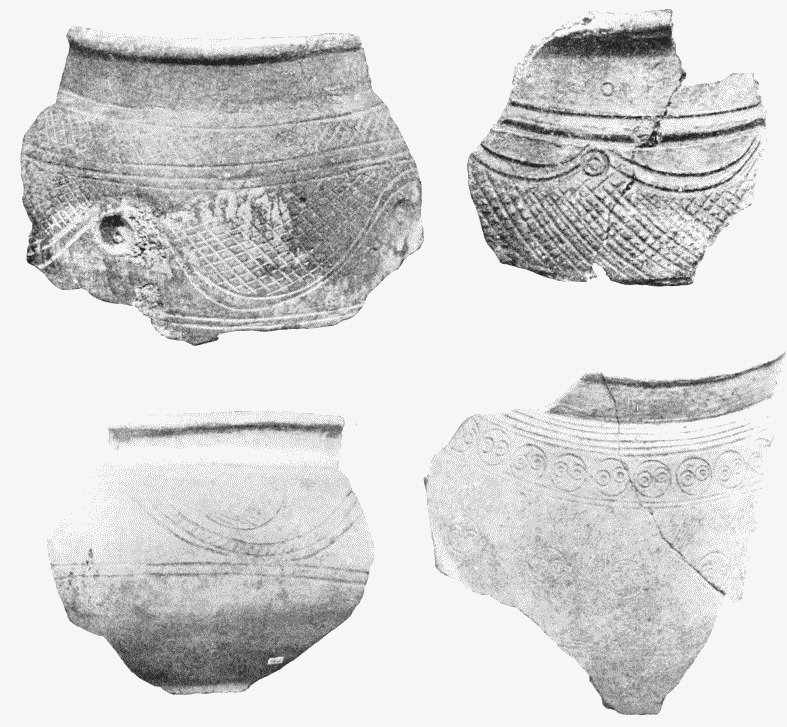
Fig. 3. Late Celtic Potsherds from the Glastonbury Lake Village (Glastonbury Museum). 2/3.
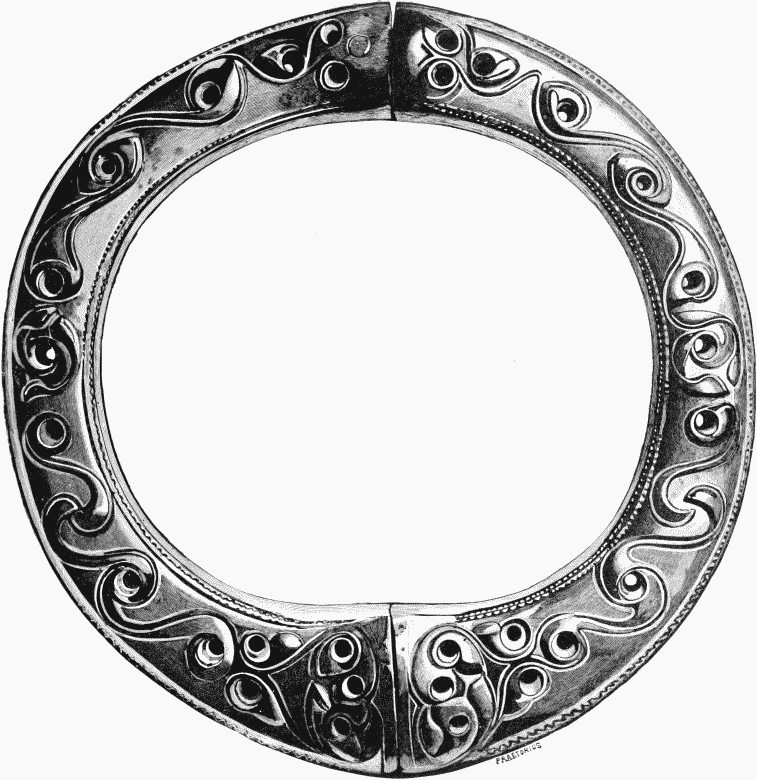
Fig. 3a. Late Celtic Collar of Bronze, found at Wraxall. (From Archæologia, vol. liv.)
In the first place, Britain, like all western Europe, became Romanized. Perhaps its Romanization was comparatively late in date and imperfect in extent, but in the end the Britons generally adopted the Roman speech and civilization, and in our island, as in Gaul and Spain and elsewhere, the difference between 'Roman' and 'provincial' practically vanished. When about a.d. 410 the Roman rule in Britain ended, the so-called 'departure of the Romans' did not mean an emigration of alien officials, soldiers and traders, such as we might see to-day if English rule ended abruptly in India or French rule in Algiers. It was administrative, not racial. Rome ceased to send to Britain high military and civil officials, and the imperial troops in the island were withdrawn or at least no longer reinforced from without. But the officials were not numerous; the troops had probably come long before to consist predominantly of local recruits, and we may believe that not many Romans actually 'departed.'
On the other hand, we know that the inhabitants of the island continued for years to think themselves 'Romani.' The gap between Briton and Roman, visible enough in the first century, had become almost obliterated by the fourth century. The townspeople and educated persons in Britain employed Latin, as casual words scratched on tiles or pottery assist to prove, while on the side of material civilization the Roman element reigned supreme. Before the Claudian conquest there had existed in the island a Late Celtic art of considerable merit, best known for its metal-work and earthenware, and distinguished by its fantastic use of plant and animal forms, its predilection for the 'returning spiral' ornament, and its enamelling. Somerset, as the preceding chapter has shown, provides us with many striking specimens of this art, and some illustrations are introduced here for further comparison (figs. 2, 3).
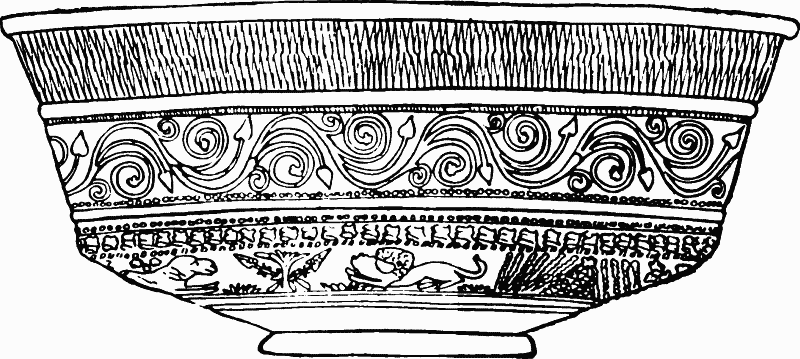
Fig. 4. Samian Bowl of the First Century a.d.
This art now vanished. In a few places, as for instance in some potteries of the New Forest and of the Nene Valley, its products survived as local manufactures, but even these were modified by Roman influences. Elsewhere, and not least in Somerset, we meet single specimens, usually of metal work, which are Late Celtic in style but occur with remains of the Roman period; but these are sporadic, and their definite association with Roman objects is not always well attested. In general the Late Celtic art met the fate which overtakes every picturesque but semi-civilized art when confronted with an organized coherent culture. Almost every important feature in Romano-British life was Roman. The ground plans of the private houses form an exception; they indicate in all probability that the Romans, coming to our shores from sunnier lands, accepted, as we might expect, some features of the native types of dwellings. But the furniture of these houses is Roman. The mosaic pavements and painted stucco and carved stone-work which adorned them, the hypocausts which warmed them, and the bathrooms which increased their comfort, were all equally borrowed from Italy. The better objects of domestic use tell the same tale. The commonest good pottery is the red ware called Samian or Terra Sigillata (fig. 4). This was copied from an Italian original and manufactured in Gaul, and it completely superseded native manufactures as the fashionable and favourite ware. Nor were these foreign elements confined to the mansions of the wealthy. Samian bowls and rudely coloured plaster and makeshift hypocausts occur even in outlying hamlets. (fn. 1)
But though the Romanization was thus tolerably complete, it must be further qualified as a Romanization on a low scale. The more elaborate and splendid and wealthy features of the Italian civilization, whether material or intellectual or administrative, were rare or unknown in Britain. The finest objects of continental manufacture in glass and pottery and gold-work came seldom to the island, and the objects of local fabric rarely attained a high degree of merit. The choicer marbles and the finer statuary are still rarer—though there is one signal exception at Bath—and the mosaics are usually commonplace and lack distinction. Of Romano-British literature we have very little and that little owes its interest to other things than literary excellence. Of organized municipal or commercial or administrative life we have but scanty traces. The civilization of Roman Britain was Roman, but it contained few elements of splendour or magnificence.
We may distinguish in this civilization two local forms deserving special notice—the town and the villa. The towns of Roman Britain were not few. But as we might expect they were for the most part small. Many of them appear to have been originally Celtic tribal centres; then under Roman influence they developed into towns, like the tribal centres in northern Gaul. Scarcely any seems to have attained very great size or wealth, according to the standard of the Empire. The highest form of town life known to the Roman was certainly rare in Britain : the coloniae; and municipia, the privileged municipalities with the Roman franchise and constitutions on the Italian model, were represented, so far as we know, by only five examples, the coloniae; of Colchester, Lincoln, York and Gloucester and the municipium of Verulam, and none of these could vie with the greater municipalities of other provinces. But while lacking in size and magnificence, the towns of Roman Britain were in their way real towns; if a modern term be allowed, we might best describe them as country towns. Most of them were walled, at least in the fourth century. Many of them had a forum built on the Roman plan, providing in Roman fashion accommodation for magistrates, traders and idlers. Not only the coloniae and municipium, which were ruled by prescribed magistrates and town councils, but many smaller places also must be regarded as having had some form of municipal life. They were, in their own way, Romanized.
Outside these towns the country seems to have been divided up into estates, known as 'villas,' and in this respect, as in its towns, Britain resembles northern Gaul. The villa was the property of a great landowner, who inhabited the 'great house' if there was one, cultivated the ground close to it by slaves, and let the rest to half-serf coloni. The villa in fact was the predecessor of the mediæval manor. In Gaul some of the villas were estates of eight or ten thousand acres, and the landowners' houses were splendid and sumptuous. In Britain we have no evidence to determine the size of the estates, and the houses—to which the term 'villa' is often especially applied—seem rarely to have been very large. A few can vie with continental residences; many are small and narrow. The landowners, as in Gaul, were doubtless the Romanized nobles and upper classes of the native population, with but a slight infusion of Italian immigrants. The common assertion that they were Roman officers or officials may be set aside as rarely, if ever, correct. The wealth of these landowners must have been almost solely agrarian; their lands were probably for the most part sheep runs and corn fields, and supplied the cloth and wheat which are mentioned by ancient writers as exported from Britain during the later Imperial period. The peasantry who worked on these estates or were otherwise occupied in the country lived in rude hamlets formed of huts or pit dwellings with few circumstances of luxury or even comfort. But even their material civilization was Roman. Here, as among the upper classes, the Late Celtic art yielded largely to the strength of Italian influences.
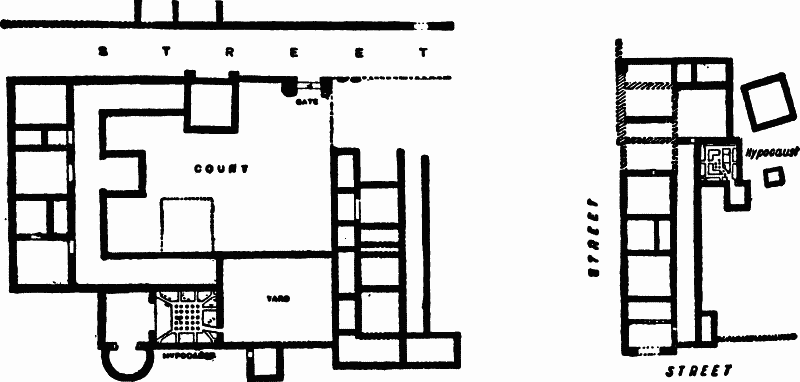
Fig. 5. Plans of Courtyard and Corridor Houses at Silchester (scale 1: 720). (The left-hand block shows a courtyard house with a corridor house adjacent; the right-hand figure a small corridor house by itself.)
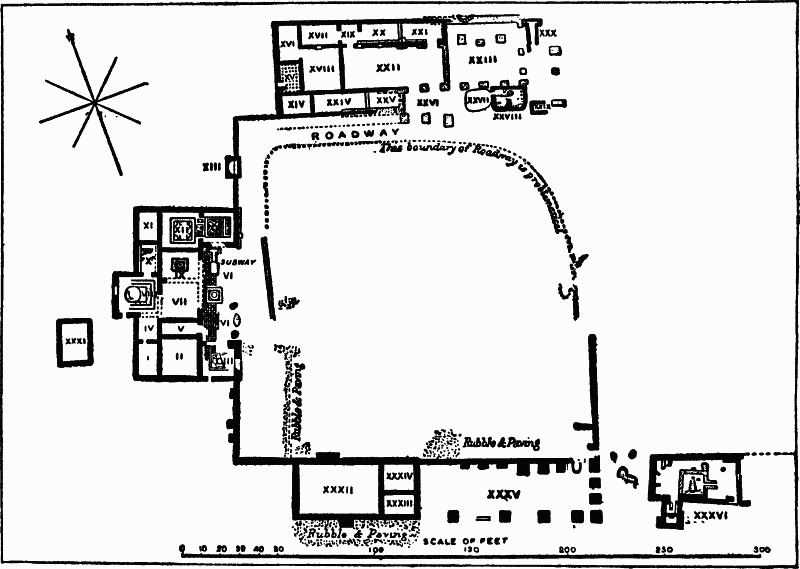
Fig. 6. Villa, consisting of Corridor House and two blocks of Farm Buildings round a Rectangular Courtyard (Brading, Isle of Wight). Room vi. is the Corridor.
In both town and country a remarkable feature is presented by the houses. Thoroughly Roman in their fittings, they are by no means Roman in their ground plans. (fn. 2) In this respect they do not in the least resemble the houses of ancient Rome and Pompeii, nor are they very like the country houses which have been dug up in Italy. They belong instead to types which seem to occur only in Britain and northern Gaul, and they very possibly represent Celtic fashions, altered by Roman contact but substantially native. A common type is that sometimes called the Corridor type (fig. 5), which shows a straight row or range of rooms with a corridor running alongside of them and generally with some slight enlargement at one end or the other. Sometimes, as in the central building at Brading (fig. 6), both ends of the corridor terminate in rooms, and a rather different type of corridor house results. Another more elaborate type shows three rows of rooms and corridors set round an unroofed rectangular courtyard of considerable size. Very similar to this last is a type in which the buildings round the courtyard are not continuous, but stand isolated each in the middle of one of the three sides; in such cases the blocks may consist of corridor houses, of barns, outhouses and farm buildings of various plans (fig. 6). There appears to be no great difference between town and country in the distribution of these types, but the stateliest country villas seem to exhibit especially the courtyard types, and the second of the courtyard types occurs only in the country. In size the houses vary as widely as houses in all ages and countries. The corridor houses are as a rule the smallest, some of them measuring little more than 40 by 60 feet in length and breadth, while in the more imposing courtyard houses the yards alone are sometimes three times that area.
The local government of the country, so far as it is known to us, exhibits the same Romanization we have found in the general civilization of Britain. We can distinguish three units of administration. The five municipalities mentioned above had doubtless each its own territory, which it governed itself. The imperial domains, secondly, formed independent areas, under imperial officials. Their extent in Britain is uncertain, but we know that the mines were imperial property, and a villa on Combe Down (No. 19) perhaps supplies some slight indications of imperial estates of another kind. Thirdly, it seems that, as in northern Gaul, so in Britain, cantonal or tribal authorities ruled such parts of the country as were not municipal or imperial areas. These cantonal authorities represented the native chiefs and nobles of pre-Roman days. But they bore sway under Roman forms and titles; they were called duoviri, like municipal magistrates, and their local meeting was styled ordo like the municipal senate. Of these, however, we have few traces in Britain and none in Somerset. The district does not even contain a town which can have served as a tribal capital, and its remains throw no light on the subject of the cantonal system in Britain.
One feature, not a prominent one, remains to be noticed—trade and industry. We should perhaps place first the agrarian industry, which produced wheat and wool. Both were exported in the fourth century, and the export of wheat to the mouth of the Rhine is mentioned by an ancient writer as considerable. Unfortunately the details of this industry are almost unknown: perhaps we shall be able to estimate it better when the Romano-British 'villas' have been better explored. Rather more traces have survived of the lead mining and iron mining which, at least during the first two centuries of our era, was carried on with some vigour in half a dozen districts—lead on Mendip in Somerset, in Shropshire, in Flintshire and Derbyshire; iron in the Weald and the Forest of Dean, and occasionally to a less extent elsewhere. Other minerals were less important. The gold mentioned by Tacitus proved very scanty. The far-famed Cornish tin seems (according to present evidence) to have been worked comparatively little, and that late in the Roman occupation. The chief commercial town was, from the earliest times, Londinium (London). It was never, so far as we know, raised to municipal rank, but was nevertheless a place of size and wealth and perhaps the residence of the chief authorities who controlled taxes and customs dues. The usual route to the continent for passengers and for goods was from the Kentish harbours to Gessoriācum (Boulogne), but the discovery of a pig of Mendip lead at the mouth of the Somme suggests that occasionally longer voyages were ventured.
Finally, let us sketch the roads. In doing so, we must dismiss from our minds the Four Great Roads which are mentioned in some early English documents and have frequently been called Roman. Three of these four roads were Roman in origin, but the fourth was not, and the idea of any such Four Great Roads is alien to the Roman road system. Instead, we may distinguish four groups, all radiating from one centre, London. One road ran south-east to Canterbury and the Kentish ports. A second ran west and south-west, first due west from London to Silchester, and thence by ramifications to Winchester and Exeter, Bath, Gloucester and south Wales. A third, Watling Street, ran north-west across the midlands to Wroxeter, and thence to the military districts of the north-west; it also gave access to Leicester and the north. A fourth ran to Colchester and the eastern counties, and also to Lincoln and York and the military districts of the north-east. To these must be added a long single road, the only important one which had no connection with London and the only one with which in Somerset we shall be seriously concerned. This is the Fosse, which cuts obliquely across from north-east to south-west, joining Lincoln, Leicester, Bath and Exeter. These roads must be understood as being only the main roads, divested, for the sake of clearness, of branches and intricacies; and, understood as such, they may be taken to represent a reasonable supply of internal communications for the province. After the Roman occupation had ceased, they were largely utilized by the English, but they do not much resemble the roads of mediæval England in their grouping or economic significance. One might better compare them to the railways of to-day, which equally radiate from London.
Such, in the main, was that large part of Roman Britain on which ordinary civilized non-military life prevailed—a land of small country towns and large rural estates; permeated by the simpler forms of Roman civilization, but lacking the higher developments; not devoid of natural resources, but not rich; a comfortable country perhaps, but an unimportant fraction of the Empire.
2. Sketch of Roman Somerset
From this brief sketch of southern Roman Britain we pass to the details of our own county. In general these details reproduce adequately the normal features which we have just described. But they are numerous and intricate, they include several items of peculiar interest, and it may be useful to summarize their principal characteristics before proceeding to discuss them one by one.
Somerset abounds with Roman remains. But the geographical distribution of these remains is very uneven. Some parts of the county were obviously well inhabited and well civilized; other parts, whether inhabited or not, were certainly not inhabited thickly or in civilized fashion. Not only the wide marshes of the Brue and the Parret and the bogs and hills of Exmoor, but all the western portion of the county, even the pleasant vale of Taunton Deane, show but few vestiges of Romano-British life. The east and the north present a different picture. Here we meet ample traces of our period. Along the Fosse, which bisects the eastern half of Somerset, were towns and villages—a settlement at Bath, a tiny town or village at Ilchester, and perhaps a village at Camerton. Villas too and other marks of rural life are common on one side or the other of the same road; they abound also in the north near Bristol and in the fertile vale of Wrington. Roughly and with certain obvious qualifications we may say that the districts east of Bridgwater were the districts of Romano-British life.
Besides these normal features, others less normal demand our attention. Bath, Aquae Sulis, the largest settlement and perhaps the only large one within the area of the county, was not an ordinary Romano-British town. It owed its existence to its hot mineral springs, and its most striking remains are those which are connected therewith—the ruins of its baths and the altars or tombstones of those who, successfully or unsuccessfully, sought the benefit of its waters. No doubt a population of others than invalids dwelt round the springs, as it does to-day. But, first and foremost, Bath was a bathing place. Let us add that its baths present one feature of signal interest which we might not expect. Among the carved stones of their ruins is a head, once the decoration of a pediment, which is the most remarkable piece of sculpture yet discovered in Britain. We know neither its sculptor nor his sources and inspiration, nor even his precise intention. But his work, in its astonishing vigour, is not only unique in Britain, it has hardly a rival in any province of the western empire.
Another noteworthy feature of Roman Somerset is furnished by the Mendip lead mines. Known, as it seems, to the pre-Roman Celts, they were worked by the Romans from the earliest period of their occupation; they were amongst the few important industries of Roman Britain, and interesting (though, unfortunately, ill-recorded) relics of them have been at various times discovered. The sporadic finds of Roman remains in Somerset are also often noteworthy. Such are the numerous coin-moulds found along the northern slope of the Polden Hills, and the hoards of fourth-century silver coins which possess a special interest for numismatists. All these help to complete the picture of a remarkable area.
But this area, as our survey will show it to us, differs in some material respects from the Roman Somerset of many earlier writers. We have to forego much that they included. We can no longer call the great earthen camps Roman. The vast plateau of Hamdon Hill, Cadbury girt with its huge ditches, Castle Neroche dominating from its lofty summit the whole expanse of Taunton Deane, Dolebury looking out from its ramparts of piled stone over the vale of Wrington, Worlebury hanging heavy over Weston and the Channel—these and more are now recognized as dating from ages other and for the most part older than the Roman. We find Roman remains in some of them, but, except perhaps on Hamdon Hill, those remains are few and late and mostly coins; they prove no real habitation. Men sometimes say of such camps that, though not of Roman origin, they were occupied by the Romans. The phrase is unfortunate. The occupation must nearly always have been both slight and brief, and also Romano-British, that is, native, rather than really Roman. In the first four centuries of our era those camps, so far as they then existed, were what they are to-day, the stately ruins of a vanished world.
Again, we must exclude some British tribes which enthusiastic writers have assigned to Somerset. The Aedui, who are said to have migrated hither from Gaul, bringing with them the apple to Glastonbury, are a tolerably obvious fiction. The Cangi or Ceangi, whom some writers place on Mendip, are a real tribe, but their true home is in Flintshire. (fn. 3) We do not, indeed, know definitely the names of the Celtic tribes who in pre-Roman days inhabited the region which is now Somerset. Bath, as Ptolemy tells us, was in the territory of the Belgae, but the western limit of that territory is not recorded. Perhaps we might conclude that it lay east of Mendip, since no Mendip lead has ever been found with the stamp de belgis or belgicvm. But this is at the best a guess.
Once more, we must not seek in Somerset those defences which Ostorius is often stated to have erected near the Avon about the year a.d. 48. The Wansdyke has been called his Vallum, and his forts have been detected at neighbouring sites. But we now know that Wansdyke is, at least in large part, post-Roman (p. 371), while the alleged forts are either (like Worlebury) not Roman, or are sites of villages or villas.
Moreover, the whole theory of the Ostorian forts has turned out an error. It rests on a bad text and a bad translation of Tacitus. The true text mentions neither a line of forts nor the river Avon. Probably it refers to a consolidation of the Roman dominion within the frontiers of the Severn and the Trent; in any case the Somerset archæologist can go his way untroubled by any heed of Ostorius. (fn. 4)
One more reflection, and that a rather different one, suggests itself concerning Roman Somerset. The county, as we have said, was in part well Romanized. It was also a part of Britain which the Saxons conquered comparatively late. Here, if anywhere, we should expect to see the form and fashion of the Roman epoch surviving into later days. We find nothing of the sort. Bath, it is true, stands on the site of Aquae Sulis, but we shall see below that Aquae Sulis lay waste for many years before English Bath was founded. Elsewhere in Somerset Roman and English sites coincide only in one case—Ilchester, and Ilchester was not an important Roman site. With this one exception the many towns of mediæval and modern Somerset—Taunton, Bridgwater, Wells, Shepton, Yeovil, Frome, Crewkerne, Ilminster, Chard, and others—are all of English origin. So, too, so far as we can judge, are the villages and even the roads except for portions of the Fosse Way. There is no continuity here between the English and their predecessors. The Somerset of Saxon and later days is a land from which Roman and Briton seem to have utterly vanished.
